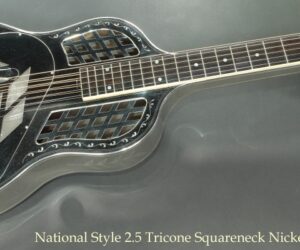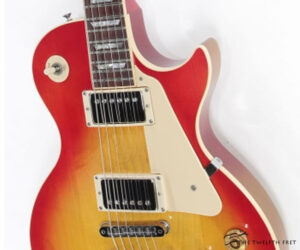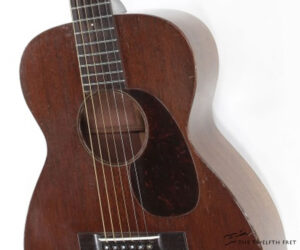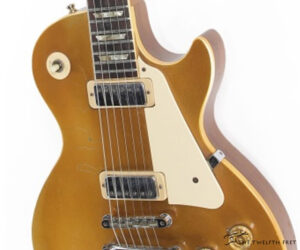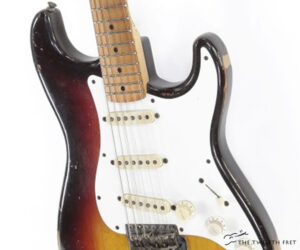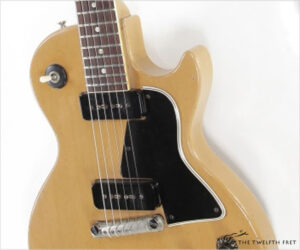The National Style 2.5 Tricone Squareneck, or ‘Style Two and a Half’ is very close to the Style 2, with just a rose engraving on coverplate’s hand rest making the difference. Introduced in 1927, the Style 2 was the top of the National line, with a brass body with nickel plating. The wooden components, such as the headstock, are Mahogany, except for the Ebony fingerboard. National Resophonic guitars were a radical, major innovation in musical instrument design.
Vintage
Here’s a Gibson Les Paul Standard Cherry Sunburst dating to October 22, 1980, sporting a Cherry Sunburst finish and a non-weight relieved, non-pancake body! The Les Paul model was introduced in 1952 as Gibson’s entry into the then-new solidbody ‘Spanish’ electric guitar field, where ‘Spanish’ refers to the way the guitar is held.
The Martin 0-17 has at least two major distinctions, as one of Martin’s oldest defined styles, and their first production steel string model. Martin’s Style 17 first appeared in 1874 as a fairly plain model, and was discontinued from 1898 to 1906.
Making its debut appearance in 1969, the Gibson Les Paul Deluxe layout was based on the 1950’s pre-humbucker P-90 models. The Deluxe body construction uses the same Maple cap on a Mahogany back as the Standard humbucker version, but the pickup routes accept either P-90s or mini-humbuckers which are mounted in P-90 sized support rings.
This instrument has sold
MORE →Showing distinct signs of having been used as intended, this Fender Stratocaster Sunburst was built during 1958 in Fullerton, California. Introduced in 1954 as the successor to the Telecaster, work on the Fender Stratocaster began in 1951.
The Gibson Les Paul Special TV model appeared in 1955, with the ‘TV’ referring to a special ‘limed’ finish intended to make the guitar more visible on black and white televisions and films. This finish had become available in 1954 on the Les Paul TV, a single-pickup Les Paul Junior. Both models used a slab Mahogany body with no Maple cap, and a Mahogany neck, with a bound Rosewood fingerboard, which into the mid 1960’s meant Brazilian Rosewood.
